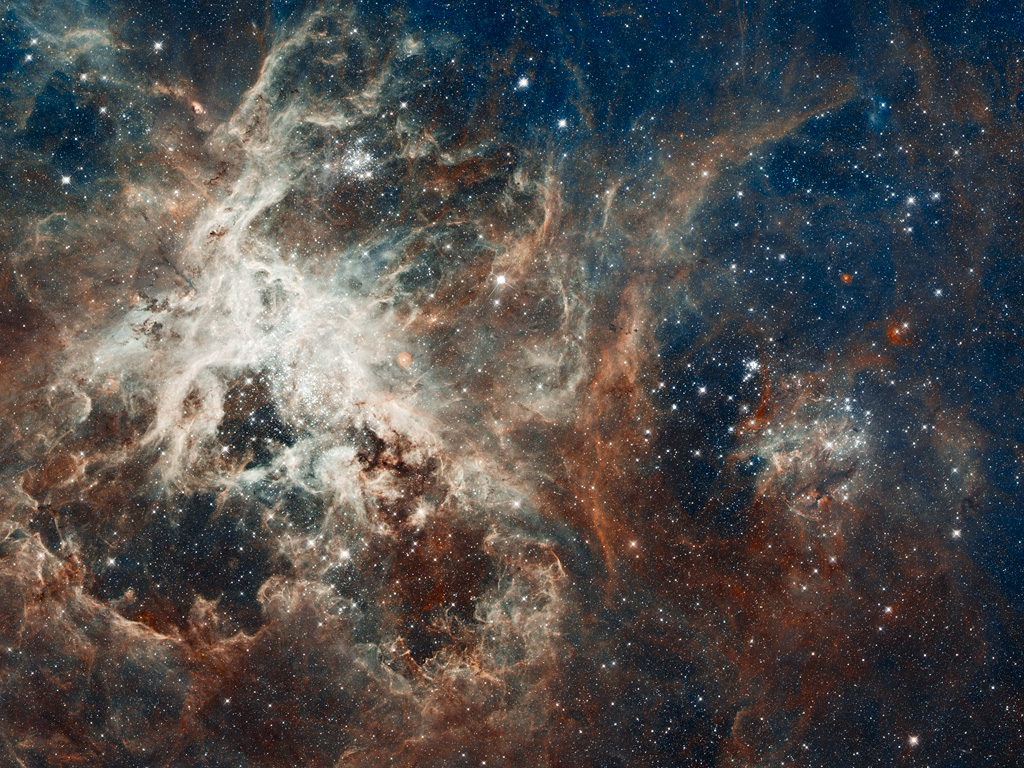In celebration of the Hubble Space Telescope’s 22nd anniversary the ESA has released this truly stunning image of the star forming region 30 Doradus.

30 Doradus Credit: NASA, ESA, ESO, D. Lennon and E. Sabbi (ESA/STScI), J. Anderson, S. E. de Mink, R. van der Marel, T. Sohn, and N. Walborn (STScI), N. Bastian (Excellence Cluster, Munich), L. Bedin (INAF, Padua), E. Bressert (ESO), P. Crowther (Sheffield), A. de Koter (Amsterdam), C. Evans (UKATC/STFC, Edinburgh), A. Herrero (IAC, Tenerife), N. Langer (AifA, Bonn), I. Platais (JHU) and H. Sana (Amsterdam)
30 Doradus is better known as the Tarantula nebula and is located 170,000 light years away within the Milky Way’s largest satellite galaxy the Large Magellanic Cloud (LMC).
The image shows a region of space approximately 650 light years across with several million stars present within. Combined, the sum total of the stars’ masses shown in this image would be well over a million times the mass of our own Sun.
The stars are grouped into smaller clusters ranging in age from about 2 million – 25 million years old, whilst this may sound ancient in human terms as far as the universe is concerned even the oldest star in the region is a newcommer.
The brightest cluster is NGC 2070 being one of the youngest (between 2 and 3 million years old) and most actively starforming regions with the larger structure Astronomers find it an attractive region to study. Recently in fact, it was revealed that at the heart of the cluster (which contains upwards of half a million stars) there is a dense clump of stars designated RMC 136 where the largest stars yet discovered reside. Indeed several of these monsters are more than 100 times the mass of our own sun, truly cosmic giants.
The fierce output of the regions hot stars sculpts the regions gas and just into the fantastic arcs and bubbles we can see in the image. The fierce radiation bombardment of radiation is also exciting the gas and dust molecules of the nebula making them glow in their own right and classing the region as an emission nebula.
The image is composed of data from both Hubble and the ESO’s MPG/ESO 2.2-metre telescope and represents the one of the largest such mosaics in existence today. The data was captured by both telescopes during an observing run in October 2011.
You can read more here.


















